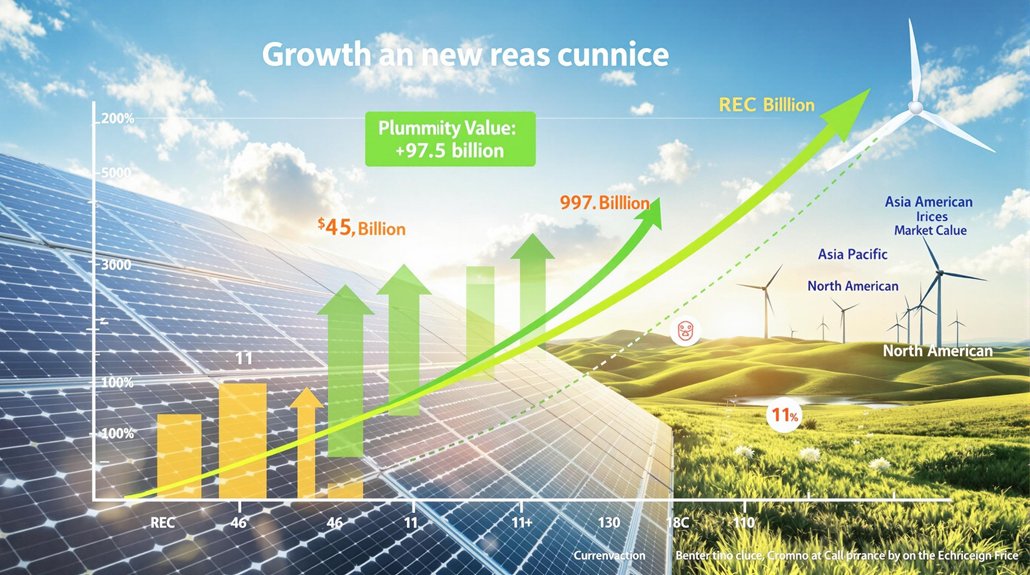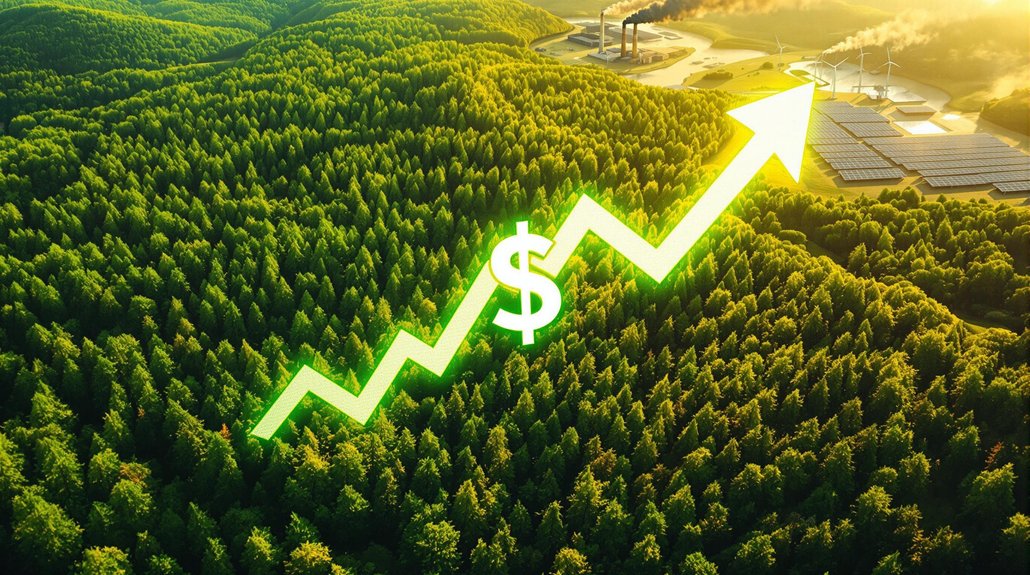Renewable Energy Certificate prices are declining markedly, with a projected 76% drop from $46/MWh in 2023 to $11/MWh by 2050. The global market, valued at $19.18 billion in 2023, is growing at 22.54% annually and could reach $97.5 billion by 2031. North America leads while Asia shows fastest growth. Price fluctuations stem from supply-demand imbalances, government policies, weather patterns, and market speculation. Different regions and energy sources experience varying price trends.

While Renewable Energy Certificate (REC) prices have dropped dramatically in recent years, the global market continues to grow at an impressive rate. Prices fell 76% from $46/MWh in 2023 to $11/MWh by 2050. Despite this decline, the global market valued at $19.18 billion in 2023 is expected to reach $97.5 billion by 2031, growing at 22.54% annually.
The REC market size was $9.3 billion in 2020 and is projected to reach $103.2 billion by 2030. North America currently leads the global market, while the Asia Pacific region shows the fastest growth. These certificates allow companies and organizations to claim they use green energy, even if they don’t produce it themselves.
Several factors influence REC prices. Supply and demand imbalances create price differences across regions. Government policies and regulations can quickly change market conditions. Weather patterns affect how much renewable energy is produced. Market speculation also leads to price swings.
Price variations exist across different regions. U.S. Solar RECs ranged from $10 to $400 in 2021. European Guarantees of Origin reached €9 in November 2022. Asia Pacific prices depend heavily on government support. In Canada, BC Hydro offered $3/MWh for 20-year contracts.
The market includes various renewable sources. Solar energy dominated in 2023, while wind power grows quickly. Hydroelectric power remains stable, and biomass is gaining popularity in some regions. The growth of clean energy resources offers significant environmental benefits including reduced greenhouse gas emissions and minimal ecological impact. The lack of standardization across REC programs creates challenges for establishing consistent pricing mechanisms globally.
REC markets operate in two main segments. The compliance market is driven by government requirements and typically has higher prices. The voluntary market responds to corporate sustainability goals and economic conditions. The price gap between these markets is narrowing in some areas.
Looking ahead, the current oversupply situation may improve by the late 2020s. The market is becoming more connected with carbon offset systems. New technologies are making trading more efficient. Corporate demand continues to rise as more businesses pursue clean energy goals. Taiwan and South Korea currently have the highest REC prices but are expected to see decreases of at least 70% in coming years.
Frequently Asked Questions
How Do REC Prices Differ Between Voluntary and Compliance Markets?
Compliance market RECs cost considerably more than voluntary market RECs.
Prices in compliance markets range from $10 to over $400 per MWh, with solar RECs commanding the highest prices. These markets are driven by strict government regulations.
Voluntary market RECs are cheaper, typically between $0.50 and $8 per MWh. They’re purchased voluntarily by companies pursuing sustainability goals rather than meeting legal requirements.
What Tax Benefits Accompany REC Investments?
REC investments don’t directly qualify for tax benefits, but the renewable energy projects that generate RECs often do.
These projects may qualify for the 30% Investment Tax Credit or the Production Tax Credit of $0.0275/kWh.
Recent legislation allows tax-exempt entities to receive direct payments for these credits, while other entities can transfer credits to third parties with tax liability.
These incentives help finance renewable energy development.
Which Factors Predict Future REC Price Volatility?
REC price volatility can be predicted by several key factors.
Supply-demand imbalances often cause sharp price swings.
Policy changes, like updates to state renewable requirements, create uncertainty.
Market conditions, including natural gas prices and grid constraints, affect REC values.
Weather patterns impact renewable generation output.
Economic growth rates influence electricity demand.
Regulatory deadlines for compliance periods can cause predictable price fluctuations as deadlines approach.
Can Individuals Purchase RECS or Only Corporations?
Individuals can indeed purchase Renewable Energy Certificates (RECs), not just corporations.
Many utility companies offer green pricing programs for residential customers. People can buy RECs through their utility, third-party providers like Arcadia Power, or online marketplaces.
Some join community solar projects that include REC ownership. Everyone can support renewable energy this way, often at affordable price points without installing their own systems.
How Do International REC Markets Compare to U.S. Markets?
International REC markets differ from U.S. markets in several key ways.
The U.S. market is more mature and standardized, while international markets are growing faster.
U.S. markets focus on wind and solar, whereas international markets include more hydropower and biomass.
Pricing is generally more stable in the U.S., with better liquidity and transparency.
International RECs often cost more and have more volatile prices due to fewer established trading platforms.









